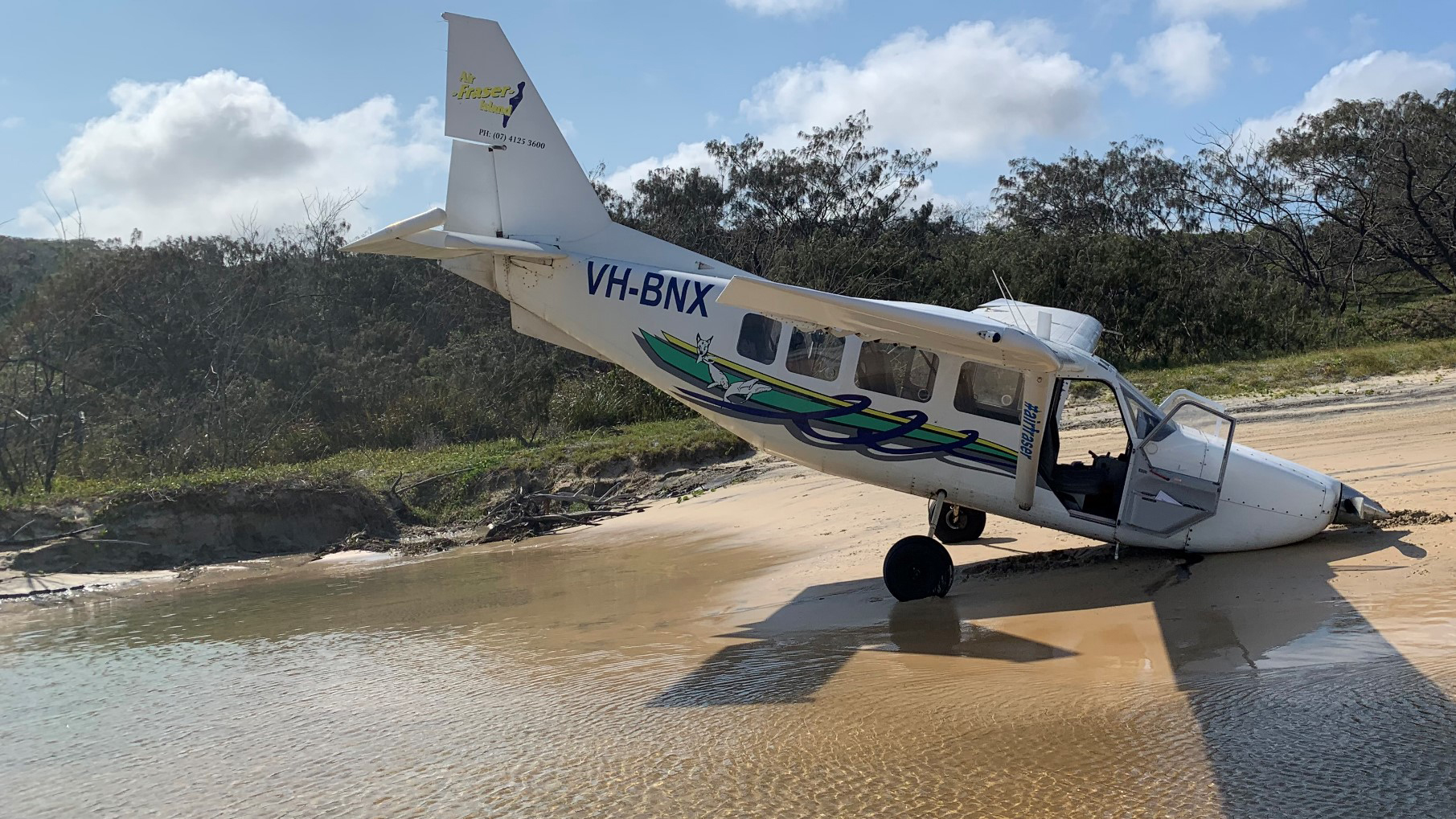
A GA8 Airvan’s nosewheel collapsed when the aircraft struck a washout after it overran a beach runway. The accident occurred after the pilot elected not to conduct a go-around despite several cues to do so, an ATSB investigation found.
The Air Fraser Island Airvan was returning to land on a beach on Fraser Island after conducting a scenic flight with a pilot and seven passengers on board on 2 January 2020. During the landing approach, the pilot observed a vehicle on the beach close to the 500 metre long runway, which the operator’s ground crew had marked out with traffic cones, and elected to land about a third of the way down the runway.
Shortly after touching down, the aircraft became airborne again, with the pilot reporting pulling back on the control column to raise the nose to minimise passenger discomfort as the aircraft passed over holes in the sand.
After passing the holes, the aircraft touched down again and the pilot attempted to brake. However, the aircraft was still at speed as it approached the end of the marked runway, beyond which was an ankle-deep freshwater soak, or washout. As the aircraft overran the runway, the pilot reported raising the nose to lift the aircraft over the washout, concerned that the aircraft would flip if the nose wheel struck the water.
Immediately beyond the washout, the aircraft pitched forwards onto its nose landing gear, which collapsed. The propeller then struck the sand and the aircraft came to a halt.
While the aircraft was substantially damaged, the pilot and passengers were uninjured.
After the accident, the operator’s safety manager paced out the distance from where the aircraft landed after passing the holes, and reported that approximately 100 metres of runway remained. A video of the landing taken by a passenger from inside the aircraft showed that less than 5 seconds elapsed between the landing and when the aircraft stopped.
“The ATSB investigation into the accident found the pilot did not conduct a go-around despite several cues to do so, such as sighting the vehicle near the runway and when becoming airborne again after the first touchdown,” ATSB Director Transport Safety Dr Stuart Godley said.
“The aircraft subsequently landed with insufficient runway remaining to prevent a runway overrun, and the overrun was onto a section of beach unsuitable for a landing roll due to a washout.”
The investigation noted that Fraser Island beaches pose a very dynamic environment for aircraft operations, with potential hazards including vehicles, people, animals and changing tides and sand conditions.
“This accident highlights to pilots the importance of being prepared to go around – to be ‘go-around minded’ – especially when, as was the case in this instance, the full available runway length is required for a safe landing and no obstacle-free overrun area exists,” Dr Godley said.
Read the report: Runway overrun involving Gippsland Aeronautics GA8, VH-BNX, Cornwell’s ALA, Fraser Island, Queensland, on 2 January 2020


